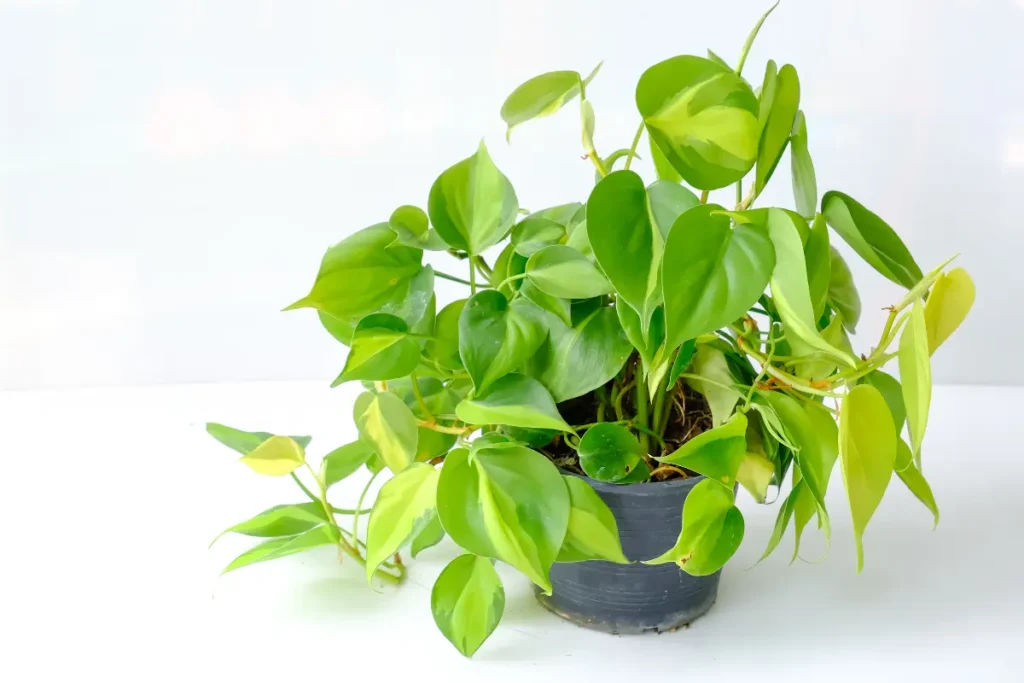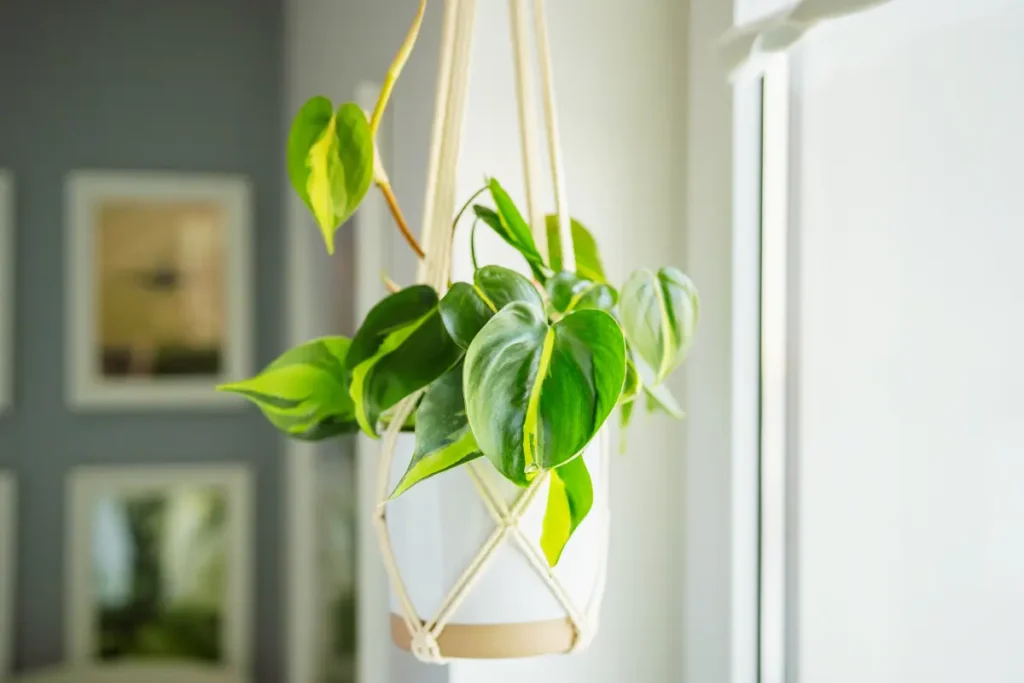Philodendron Brasil: How to Grow and Care Guide

Want a houseplant that instantly turns any dull corner into a fresh, tropical vibe? Meet the Philodendron Brasil — scientifically know as Philodendron hederaceum and commonly knows as Heartleaf Philodendron, Cordatum Brazil, or Scandens Brazil. With its heart-shaped leaves painted in streaks of bright lime and deep green, this stylish trailing vine brings color, texture, and a relaxed jungle feel to shelves, hanging baskets, or tabletops. It’s low-fuss, forgiving, and perfect for beginners and collectors alike.
But even an easy plant like the Philodendron Brasil can worry you when its vines get leggy, leaves lose their variegation, or you’re stuck wondering why tips are turning brown. If any of these sound familiar, you’re in the right place. This quick care guide will show you how to fix these common problems fast — and keep your Philodendron Brasil looking lush, healthy, and Insta-worthy all year round.
Brasil Philodendron: Plant Profile & Care Summary
Aspect | Details |
|---|---|
Name | Philodendron Brasil |
Alternative Names | Heartleaf Philodendron, Cordatum Brazil, Scandens Brazil, Variegated Heartleaf Philodendron, hederaceum ‘Brasil’ |
Family | Araceae |
Origin | Native to Central America, South America, and the Caribbean tropical rainforests |
Plant Type | Evergreen Perennial Vine |
Foliage | Heart-shaped leaves with vibrant green and golden-yellow variegation |
Ideal Light | Bright, indirect light |
Too Little Light | Leaves lose variegation |
Too Much Sun | Leaves may scorch |
Placement | East/north windows best |
Light Filtering | Use sheer curtains |
Rotate | Turn pot monthly for even growth |
Ideal Soil Mix | 40% indoor potting soil, 30% perlite/pumice, 30% orchid bark/coco coir |
Bonus Additive | Add worm castings for nutrients |
Soil Goal | Loose, well-draining, airy |
Ideal Temperature | 60–85°F (16–29°C) |
Minimum Safe Temperature | Never below 50–55°F (10–12°C) |
Humidity Level | 60–80% preferred |
How to Boost Humidity | Humidifier, pebble tray, misting, group with other plants |
Pro Tip: Keep your Philodendron Brasil away from cold drafts and vents to protect leaves from temperature stress.
What Is a Philodendron Brasil?
The Philodendron Brasil is a colorful cultivar of the classic Heartleaf Philodendron (Philodendron hederaceum). You might also hear it called Cordatum Brazil, Scandens Brazil, or Variegated Heartleaf. Native to Central and South America’s rainforests, this plant’s heart-shaped leaves feature dramatic lime-green streaks. It’s a natural climber, often found scaling tree trunks in the wild — so giving it a moss pole at home makes it feel right at home.

How to Care for Philodendron Brasil
Caring for your Philodendron Brasil is simple once you know exactly what it needs to stay healthy and lush indoors.
Watering
Water when the top 2–3 inches feel dry. Soak the soil thoroughly until water drains from the pot’s holes, then empty saucers to avoid soggy roots. In winter, water less frequently. The Heartleaf Philodendron tolerates mild dryness better than being overwatered.
Sunlight
Your philodendron hederaceum brasil loves bright, indirect light to keep its striking lime-green variegation bold and vibrant. Place it near an east or north-facing window where sunlight is filtered but not harsh. Direct afternoon sun can scorch the delicate leaves, while too little light makes vines leggy and leaves plain green.
Humidity
As a tropical vine, your Philodendron Brasil loves 60–80% humidity. Use:
- Humidifiers in dry seasons
- Pebble trays under pots
- Group plants together to share humidity
- Occasional misting (light, not heavy)
- Dry air = crispy tips and small leaves.
Tip: If natural light is limited, you can use a grow light to keep your Philodendron Brasil thriving year-round.
Ideal Temperature
philodendron scandens brasil is a tropical vine that prefers warm, stable temperatures indoors. It grows best between 65°F and 85°F (18°C–29°C) and dislikes sudden cold drafts. Never let it sit below 55°F (13°C) for long, or you may see stunted growth and leaf damage.
Bonus Tip: To mimic its natural rainforest home, pair warm temps with moderate to high humidity — your plant will reward you with lush, healthy vines.
Fertilize
Fertilize monthly in spring and summer with a balanced 20-20-20 liquid fertilizer, diluted to half strength. Stop feeding in fall and winter when growth slows. Over-fertilizing can cause salt buildup and root burn.
Pruning
Prune your Philodendron Brasil, Scandens Brazil, or Cordatum Brazil to:
- Remove dead, yellow, or crispy leaves.
- Keep vines bushy and compact.
- Propagate cuttings easily.
Use sharp, sterile shears. Trim just above a leaf node. Always prune in spring or summer.
How to Propagate Philodendron Brasil?
Propagation is simple:
- Take 4–6 inch stem cuttings with at least 2–3 leaves.
- Remove lower leaves to expose nodes.
- Place cuttings in water or damp soil.
- Keep in warm, bright indirect light.
- Roots appear in 2–4 weeks — pot when roots are an inch long.
Fun fact: the Philodendron Brasil is one of the easiest aroids to multiply!
Does Philodendron Brasil Climb?
Yes! This Variegated Heartleaf naturally climbs trees in the wild. Indoors:
- Use a moss pole or trellis.
- Tie stems loosely with garden tape.
- Climbing helps the plant grow bigger leaves.
No pole? It’ll happily trail down a shelf too.
Is Philodendron Brasil Toxic?
Pet owners must know about the philodendron brasil toxicity that this beautiful houseplant is toxic to cats and dogs if ingested. It contains calcium oxalate crystals, which can cause mouth irritation, drooling, and digestive issues. If chewed, contact your vet or poison control right away.
Safety Tips for Pet Owners
- Place the plant out of reach of pets, such as on a high shelf or hanging planter.
- Monitor your pets around the plant and discourage chewing.
- If ingestion occurs, contact your vet immediately.
Common Problems With Philodendron Brasil
Even though the philodendron brasil — also called Heartleaf Philodendron, Cordatum Brazil, or Scandens Brazil — is one of the easiest indoor vines to grow, it can still run into a few classic issues. Here’s how to spot them and exactly what to do next.
Yellow Leaves
Yellow leaves usually mean you’re overwatering. Too much moisture suffocates roots and causes rot.
Solution: Let the top 2–3 inches of soil dry completely before watering again. Always empty saucers so the pot doesn’t sit in standing water.
Brown Leaf Tips
Brown tips often show up when the air’s too dry or the plant’s getting blasted with direct sun. Tropical vines like this love a bit of extra humidity.
Solution: Move your Brasil Philodendron to bright, indirect light, away from direct rays or heat vents. Boost humidity with a pebble tray, humidifier, or gentle misting.
Leggy Vinera
Leggy, stretched stems with sparse leaves mean your Heartleaf Philodendron isn’t getting enough light. It’s reaching for the sun.
Solution: Relocate your plant to an east or north-facing window with bright, filtered light. Rotate the pot every few weeks for even growth and bushier vines.
Loss of Variegation
If your philodendron hederaceum brasil starts losing its trademark lime variegation and turns plain green, it’s living in too much shade.
Solution: Snip off reverted all-green stems to encourage new variegated growth. Move your plant to a brighter spot — but keep it out of harsh midday rays.
Droplets on Leaves
Seeing tiny droplets hanging from leaf tips? That’s guttation — your vine’s way of pushing out excess water when it’s a bit too wet.
Solution: Cut back slightly on watering. Make sure the pot has good drainage holes and that the soil mix stays airy, never soggy.
Pro Tip: Small tweaks like checking soil before watering and adjusting light make a huge difference. Keep an eye out for these signs, and your Philodendron Brasil will stay lush and healthy year-round.
Decor Ideas
The variegated heart leaf philodendron’s vibrant foliage makes it a stunning addition to any space. Here are some decor ideas:

- Hanging Basket: Let its trailing vines cascade down for a lush, tropical look.
- Shelf Decor: Place it on a bookshelf or mantel to add a pop of color.
- Bathroom Oasis: Its love for humidity makes it perfect for bathrooms.
- Office Companion: Brighten up your workspace with its cheerful foliage.
- Moss Pole Display: Train it to climb a moss pole for a dramatic, vertical accent.
Conclusion
The philodendron scandens brasil is more than just a plant—it’s a vibrant, low-maintenance companion that brings life and beauty to any space. Whether you’re a beginner or a seasoned plant parent, its stunning variegation and easy-care nature make it a perfect choice.
You came here with questions, and we hope you’re leaving with answers, inspiration, and a sense of confidence. Remember, plants aren’t just decor—they’re living beings that grow with you. So go ahead, bring home a Philodendron Brasil, and let its lush foliage transform your space and your mood.

